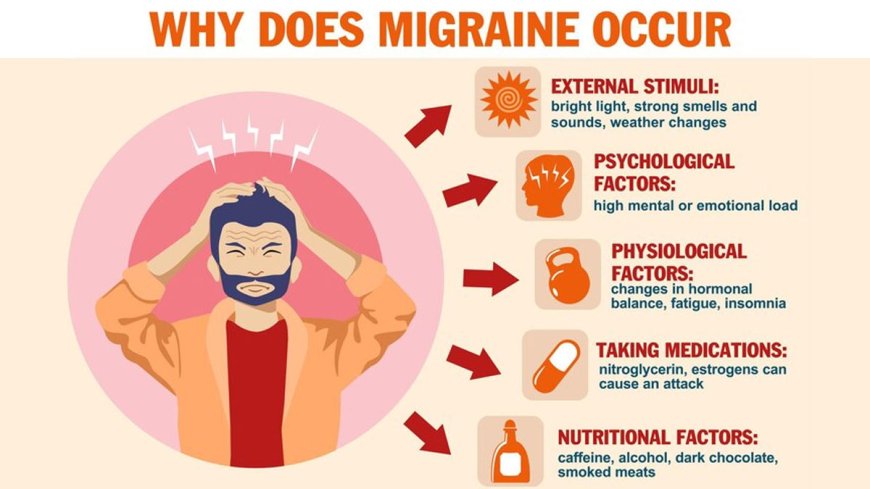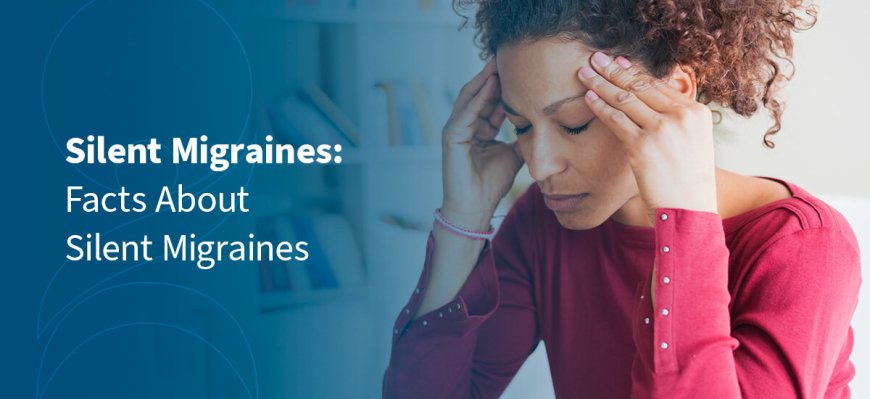"Exploring Migraine Triggers: What to Avoid for Better Health"
Discover effective ways to manage and prevent migraine attacks, so you can live a more comfortable life.
Migraines are not just your average headache. They are intense, often debilitating headaches that can significantly impact a person's quality of life. For those who suffer from them, understanding the symptoms, causes, and treatments is crucial for managing this complex neurological condition.
What is a Migraine?
A migraine is more than just a headache. It is a neurological condition characterized by intense, throbbing pain, often on one side of the head. Along with the pain, individuals may experience a range of symptoms, including nausea, vomiting, sensitivity to light and sound, and visual disturbances known as aura.
Causes and Triggers
The exact cause of migraines is still not fully understood, but they are believed to involve a combination of genetic and environmental factors. Some potential triggers include:
Hormonal Changes: Fluctuations in estrogen, particularly around menstruation, can trigger migraines in some women.
Stress: Emotional stress and tension can lead to migraines.
Sensory Stimuli: Bright lights, loud noises, and strong smells can trigger migraines in susceptible individuals.
Sleep Disturbances: Changes in sleep patterns or inadequate sleep can contribute to migraines.
Weather Changes: Some people find that changes in weather, such as barometric pressure changes, can trigger migraines.
Diet: Certain foods and drinks, such as aged cheeses, processed meats, alcohol, and caffeine, can trigger migraines in some individuals.
Symptoms of Migraines
Pain: The hallmark of a migraine is a severe headache, typically throbbing or pulsing. It's often located on one side of the head, but it can affect both sides.
Aura: About 1 in 4 migraine sufferers experience an aura before the headache begins. Auras are usually visual disturbances, such as seeing flashes of light, blind spots, or zigzag lines.
Sensitivity: Many people with migraines become sensitive to light, sound, and even certain smells.
Nausea and Vomiting: Migraines can cause gastrointestinal disturbances, leading to nausea and sometimes vomiting.
Fatigue: After a migraine attack, individuals often feel drained and fatigued for days.
Types of Migraines
Migraine without Aura: This is the most common type of migraine, characterized by moderate to severe headache pain without an aura.
Migraine with Aura: Some people experience visual disturbances or other sensory changes before the headache begins. This is known as a migraine with aura.
Chronic Migraines: When a person experiences migraines on 15 or more days per month for at least three months, it's classified as chronic migraines.
Menstrual Migraines: Some women experience migraines around the time of their menstrual period.
Treatment Options:
Medications:
Pain Relievers: Over-the-counter medications like ibuprofen or acetaminophen can help relieve mild migraines.
Triptans: These are prescription drugs that can help with moderate to severe migraines by blocking pain pathways in the brain.
Preventive Medications: For frequent or severe migraines, doctors may prescribe medications to prevent attacks.
Lifestyle Changes:
Stress Management: Techniques such as meditation, yoga, or deep breathing exercises can help reduce stress.
Healthy Diet: Avoiding trigger foods and staying hydrated can help.
Regular Exercise: Physical activity can reduce the frequency and severity of migraines.
Sleep Hygiene: Establishing a regular sleep schedule and creating a restful environment can improve sleep quality.
Alternative Therapies:
Acupuncture: Some people find relief from migraines through acupuncture.
Biofeedback: This technique helps individuals control bodily processes that contribute to migraines, such as muscle tension.
Avoiding Triggers:
Identifying and avoiding triggers, such as certain foods, can help prevent migraines.
Living with Migraines
Living with migraines can be challenging, but there are steps individuals can take to manage the condition and improve their quality of life. It's essential to work closely with healthcare professionals to find the right treatment plan. Keeping a migraine diary can also help track triggers and patterns, aiding in prevention.
Migraines and Mental Health
Living with migraines can take a toll on mental health. The chronic pain, unpredictable nature of attacks, and limitations on daily activities can lead to anxiety, depression, and feelings of isolation. It's essential for individuals with migraines to address their mental well-being as part of their overall treatment plan. Therapy, support groups, and stress-reduction techniques can all be beneficial.
Migraines in Children and Teens
Migraines are not limited to adults; they can also affect children and teenagers. In fact, about 10% of school-age children suffer from migraines. However, diagnosing migraines in children can be challenging since they may not always be able to articulate their symptoms. Parents and caregivers should look for signs such as:
1. Complaints of head pain
2. Nausea or vomiting
3. Sensitivity to light or sound
4. Changes in behavior
If migraines are suspected in a child, it's important to consult with a pediatrician for proper evaluation and management.
Pregnancy and Migraines
Pregnancy can bring about changes in migraine patterns for some women. While some experience relief from migraines during pregnancy, others may find that their migraines worsen. Treatment options during pregnancy are limited due to the potential risks to the developing fetus. It's crucial for pregnant women with migraines to work closely with their healthcare providers to manage symptoms safely.
Conclusion
Migraines are a complex neurological condition that affects millions of people worldwide. While there is no cure, there are many treatment options available to help manage symptoms and improve quality of life. Understanding triggers, seeking proper diagnosis, and exploring various treatment avenues can make a significant difference for those living with migraines. By staying informed and proactive, individuals can work towards better management and relief from this often-debilitating condition.
What's Your Reaction?












































